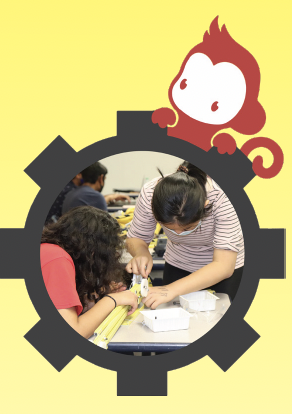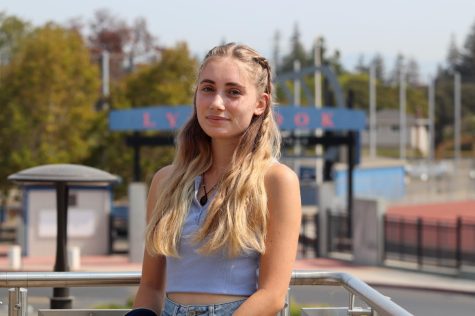Lynbrook Robotics revives CalGames

Graphic illustration by Amishi Chandra and Jason Shan
The Lynbrook Robotics team works hard for CalGames, an annual robotics competition.
October 6, 2021
Lynbrook hosted CalGames, an annual robotics competition traditionally organized by the Western Regional Robotics Forum, after Pittsburgh High School cancelled the event due to COVID-19 related concerns. The event took place from Oct. 1 to Oct. 3 and attracted an estimated 500 attendees. The competition was almost identical to previous CalGames: The only difference was the host school. Since they had the necessary facilities, Lynbrook Robotics decided that it would be a great opportunity to host this year’s games.
“[Hosting the competition] was a brand new experience for the entire team,” said Swasti Jain, senior and member of Lynbrook Robotics.
CalGames happens outside of competition season, which takes place between January and March. Unlike a majority of robotics competitions, CalGames is of a smaller scale, and participants are generally from the Bay Area, including many FUHSD schools. In these fall competitions, participating teams use their competition robot from the previous season. Because the 2020-21 school year was remote and the team did not build a robot, they used their robot from the 2019-20 season.
There are two parts to the competition: an autonomous period, during which competitors are not allowed to touch the robot, and a teleoperated period, during which competitors drive the robot. The autonomous period lasts 15 seconds, while the teleoperated period lasts two minutes and 15 seconds. The goal is to pick up dodgeball-sized balls and shoot them into one of three goals. The low goal is worth less points than the two other goals, which are higher up. The robot may start pre-loaded with three balls. Since the robot must travel across the competition floor to pick up balls, it is in their best interest to pick up and launch them as fast as possible. The faster shots are made, the more points can be scored. At the end of the match, the robot must attach itself onto a seesaw-like platform. Scores are primarily determined by the points from the game, but there are special awards for the quality the of robot design as well as other categories.
The competition took place in the field house and gym over the three-day period. While the games took place in the gym, the robotics teams and their robots resided in the field house when they weren’t competing. Lynbrook Robotics set up the facilities on Friday, Oct. 1, and teams had the opportunity to participate in practice matches. Saturday, Oct. 2 was preliminaries, which continued onto Sunday, Oct. 3 where elimination matches also happened. There were a total of 29 teams that participated, with a maximum of 16 attending members per team due to COVID-19 restrictions. Unlike previous years, no spectators were allowed.
“We wanted to get as many people there as possible, especially our new members,” said Sid Kannan, senior and Co-President of Lynbrook Robotics. “It’s really cool for them to see what an actual competition looks like, which is [an] advantage of us hosting here.”
It was a new experience for the majority of the team since most of the logistics were taken care of by WRRF. However, certain logistics, such as setting up the field and finding food vendors, were the responsibility of Lynbrook Robotics. Members of the robotics team reached out to local food truck vendors, who attended the event to provide food for purchase. All event volunteers, many of who were competitors’ parents, received food for free.
“We’ve worked with WRRF in the past, and it seemed like a cool thing we could have done,” Kannan said. “They really needed a host, and as long as we’re able to do it, I felt like we had the capability to make it happen.”
In preparation for CalGames, the robotics team did many work sessions to prepare their robot and improve it to working condition. For the two weeks leading up to the CalGames, work sessions were 15 to 25 hours per week, not including work done individually by members at home. Much of the work consisted of testing and improving the design of the 2020 robot. Kannan describes the four areas of improvement: getting a working climber, improving the ball storage mechanism so it jams less often, cleaning up the wiring on the robot and testing the software more.
“CalGames [was] our first in-person competition since early 2020,” said Andy Min, senior and Co-President of Lynbrook Robotics. “We were excited to finally be able to compete. We’ve traditionally done pretty well in CalGames, so we had high expectations for ourselves.”


































































